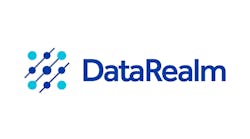San Diego, Calif. -- The standards battle between WirelessHART and ISA100.11a is driving innovation that will ultimately benefit industrial companies, according to a recently published report by technology research firm ON World.
With the potential to save industry billions of dollars in increased efficiencies and avoided downtime, industrial companies are early adopters of wireless sensor network (WSN) technology and active standards participants. As hundreds of participants embark on an ambitious goal for a single converged wireless standard, end users are calling for solutions that mitigate investment risk.
"Although the standards competition for wireless process automation has slowed adoption and complicated product development, it provides an opportunity for new entrants as well as emerging technologies such as IP sensor networking," says Mareca Hatler, ON World's research director.
ON World's recent survey with 105 industrial end users found that 14% have installed over 100 wireless field devices so far. Fifty-nine percent are planning to investigate WSN applications within the next 18 months.
Growing Markets
Today, there are tens of thousands of industrial wireless sensor network deployments underway in factories, refineries, water treatment facilities, power plants, oilfields, pipelines, and utility grids. Hundreds of high-profit-margin niche markets continue to attract new entrants, such as Ambient Systems, Cypress, Eltav and E-Senza offering simplicity and lower costs. Companies that bridge industrial applications with IT systems are another growing threat.
ON World identified well over 200 current industrial WSN applications in 15 unique target markets. Operational efficiency and increased productivity are the most commonly named adoption drivers, followed by increasing product quality and asset management.
Standards Evolution
Low-power radios such as IEEE802.15.4 and wireless mesh networking, epitomized by Dust Networks' TSMP protocol and its "Smart Dust" roots, have transformed the industrial wireless sensor network landscape. There are thousands of industrial wireless mesh deployments worldwide, standards have been ratified and dozens of wireless mesh products are planned to be launched by the end of 2010. Competition is intensifying for standards-based mesh components as demonstrated by the offerings of Nivis, STG/Freescale and the WiTeck Alliance.
Although wireless mesh systems will be the fastest growing segment over the next five years, it is unlikely that one radio or protocol can meet the diverse requirements for all industry wireless applications. IETF standards, such as 6LoWPAN (IPv6 over 802.15.4) and the in-progress ROLL, promise to unify the sensor islands and enable developers to use common IP tools to accelerate sensing and control solutions. Supported in the ISA100.11a specification, IP sensor networking is being driven by multi-billion dollar smart grid initiatives and is gaining traction for home and building energy management.
Wi-Fi is also getting more attention as a wireless sensor network alternative that leverages existing Wi-Fi infrastructure and provides intrinsic support for IP. Wi-Fi sensor or data acquisition products are currently available from at least half a dozen vendors, including National Instruments, ProSoft, Hitachi, Honeywell and Wi-Fi Sensors.



